The problem with the flash drive is that the disk needs to be formatted. The flash drive asks to format: what should I do? Options for solving the problem when the external hard drive does not open
They are one of the most popular ways to move files from one computer to another. Flash drives have gained such popularity due to their large capacity, high speed and versatility. But flash drives also have disadvantages. For example, they are not very reliable.
Users who actively use flash drives know that a flash drive can stop working at any time. One of the typical problems is when the flash drive does not open and asks for a disk. In this material we will tell you what to do if you encounter just such a problem.
If your flash drive does not open and displays the message “Before using the disk in the drive, it must be formatted,” then this means that its file system is damaged and the operating system cannot use it. In most of these cases, the files stored on the flash drive remain unharmed. Therefore, there is no need to panic and mourn lost documents ahead of time.
Firstly, if you encounter such a problem, it is not necessary until you have recovered all the data from it. This will increase your chances of successful file recovery.
And secondly, to recover you will need a special file recovery program. Most of these programs are paid, and those that can work correctly with flash drives are generally paid. In this article we will demonstrate the recovery of files from a flash drive using the paid program Active@ File Recovery 12 as an example.
So, let's launch the Active@ File Recovery program. In the left side we highlight the flash drive, which does not open and asks to format the disk.


After this, a window with scanning settings should open in front of you. Here you need to select the file system that was used on the flash drive. In our case it is . If you don't know what file system was used on the flash drive, you can mark several file systems at once. After selecting the file system, click on the “Scan” button.


After the scanning is completed, the “SuperScan” section will appear in the left side menu, and your flash drive will appear in it. Select the flash drive with the mouse and on the right side of the screen you will see the files that were stored on it. In order to restore a file, you need to call the context menu (right-click) and select “Recover”.


After clicking the “Recover” button, the recovery process will begin. Recovery time depends on the file size.

That’s it, after that the recovered file will appear in the folder you selected.
If there were a lot of files on the flash drive and you cannot find the document you need, then you can restore all the files at once. To do this, select all the files and start restoring them, as described above. In addition, after you have scanned the flash drive, you can use the file search. To do this, select the flash drive in the left side menu and click on the “Search” button.
A fairly common occurrence is when a user inserts a USB drive on which some important information is stored into the appropriate port, but the system asks to format the flash drive. What to do in this case? First of all, don't panic. The fact is that with the right approach to solving this problem, the data will most likely, in extreme cases, be restored even after formatting. The methods proposed below allow you to avoid the need for formatting with complete restoration of everything stored on a removable device.
The system does not read the flash drive (asks to format): what to do?
In general, the mistake of many users is storing important information or personal data on removable media, since they are more susceptible to software failures and physical breakdowns than hard drives.
We are not talking about physical damage now, but as for software problems with the appearance of bad sectors due to a violation of the integrity of the file system, here you need to apply appropriate troubleshooting methods. Let's say the computer asks you to format a flash drive. What to do? After all, complete formatting will destroy absolutely all data. It would be nice if quick formatting is used. Recovering information in such a situation is as easy as shelling pears. But the system offers to perform a full formatting. In this case, to begin with, you can use Windows tools with the parallel use of special software to restore the functionality of both the device itself and the files stored on it.
The flash drive does not open (asks to format): what to do in the simplest case?
The first drive technique is to use a standard disk checker, but launched not through the disk properties section, but from the command line starting with administrator rights.
To launch it, you can use the Run console and the cmd command, or directly open the cmd.exe file in the System32 directory of the main operating system directory.

So, the computer asks you to format the flash drive. What to do? First, you need to remember the drive letter, and then in the command console write a line to check the media for errors and automatically correct them. For example, if the device in the system is listed under the letter Z, the command looks like this: chkdsk z: /f. Depending on the volume, the process may take quite a long time, so you will have to be patient. At least in most cases, software failures can be resolved quite simply.
The most popular utilities for recovering removable USB drives
If the failure cannot be corrected using the method described above, you will have to use additional software.
Among the most popular and most efficient programs are the following:
- TestDisk.
- Handy Recovery.
- Active@ File Recovery.
- Recuva.
- R.Saver and R-Studio.
TestDisk
Now let's look at a situation where the first method did not work, and the system again asks you to format the flash drive. What to do in such a situation? One of the most effective methods, many experts call the use of the TestDisk program, which operates in DOS mode.

With this utility everything is quite simple. We launch the program, select our device with arrows, indicate the parameter value for the partition table (usually Intel), select the partition to be restored in the form of the entire media (Whole disk), for the file system select the Other parameter, which corresponds to FAT32, and at the end we write the full path to the created directory in which the recovered files are supposed to be saved.
Handy Recovery
Now a few words about one more program. Again, it is assumed that the system is asking you to format the flash drive. What to do if the previous methods did not work? We can recommend using the Handy Recovery program.

After starting the utility, in the main window, select a removable disk, click the start analysis button, in the results select the folder or file that needs to be restored (they will be marked with the appropriate markers), and click the restore button.
Active@ File Recovery
Let's see what can be done if the previous method did not produce results, and the system again asks you to format the flash drive. What to do in this case? Use the Active@ File Recovery program.

There shouldn't be any problems with her either. In the main window, from the menu on the left, select removable media and click the SuperScan button, then specify the file system type, click the start process button, and then use the data recovery function by calling it from the menu or immediately using the Ctrl + R key combination. After This specifies the final directory for saving data, after which you can completely calmly start formatting, if this is really necessary.
Recuva
The Recuva program is quite popular among ordinary users because it is very easy to use.

To recover files, you can specify a specific data type (for example, audio, video, or graphics). If you want to find everything that can be recovered, select the All Files option. In the results, files that can be restored to their original state are marked in green. Those that you can try to restore are yellow, and those that cannot be restored are red.
R.Saver and R-Studio
But the Recuva application does not always work correctly, not to mention the fact that it may not detect long-deleted objects. In such a situation, it is best to give preference to the R.Saver and R-Studio utilities, which are very similar to each other.

It is these two programs that are capable of finding on removable media even those files that the user does not even know about deleting. Of course, the scanning process will take much more time, but the result will be completely unexpected for many.
Today, a flash drive is an indispensable portable device for storing information in electronic form. Each of us has at least one flash drive in our house, and some users have a whole collection. Unfortunately, this device is not reliable, and therefore today we will look in more detail at the problem when a flash drive asks to be formatted.
A problem when the contents of a flash drive cannot be viewed because the system requires it to be formatted occurs due to problems in the file system. This problem can occur for several reasons:
- Incorrect removal of the flash drive;
- Action of viruses;
- Damage to the file system as a result of a computer crash;
- Flash drive failure.
Unfortunately, if a similar problem has already happened, then it will be impossible to refuse formatting almost 100% of the time. However, after the procedure is done, you can restore all the information previously contained on it using special programs. But first, it’s still worth running a disk check so that Windows can independently try to find the problem and fix it in a timely manner.
Method 1: Check the disk using Windows

Where i: is the letter of the flash drive for which the check will be performed.
If this step does not help you, you can safely format the flash drive, and then proceed to the second or third method (your choice).
Method 2: Data Recovery Using Recuva
If you're not familiar with Recuva, you've probably heard of the CCleaner tool. These programs are united by the fact that they came from under the wing of the same developers.
The Recuva program has a paid version, however, on the developer’s website you can also find a version of the program that is distributed completely free of charge. Fortunately, it is quite enough to perform data recovery.





Method 3: recovery using R-STUDIO program
Another quite effective tool for recovering deleted files. The program is paid, however, it will be more than enough if you need to perform data recovery from a flash drive right now.






Today we will look at:
An external hard drive is a very popular and useful device these days. It is thanks to it that you can store large amounts of data, which you can then use in any other device that has a USB drive. In general, an external HDD is a large flash drive with impressive capacity, which is very similar in its characteristics to any other hard internal HDD of a computer.
However, along with the fact that this is, in fact, a hard drive, and not a full-fledged flash drive, there are problems associated with hard drives, one of which, in particular, is the problem when the system cannot access to an external hard drive and asks to format it. Let's figure out together how to get rid of this error.
Why did this problem occur?
An error when the contents of an external HDD cannot be opened, and the disk itself requires formatting, provided that there are no physical defects, is always associated with the file system.
A file system is a method of organizing information on any storage medium (be it a flash drive or hard drive). Today, the most commonly used and most efficient file system is NTFS. It allows you to store files of 4 GB or larger in size, and also has an improved data security system compared to its direct competitor, the FAT32 file system (however, the second has better performance and consumes less RAM).
It is the absence of a file system on the media that can lead to the system insisting on formatting the hard drive where this problem is detected. Typically, this is indicated by the following information in the hard drive properties: instead of the NTFS or FAT32 file system, you can find RAW.

The RAW value means that there is simply no file system on the external hard drive.
Solving the problem with opening the contents of the disk
The Windows operating system provides for various situations related to hardware and software errors and allows you to easily and quickly fix them:
Important! This tool can only fix minor problems. In this case, there is a possibility that some data will be lost.
The second, more effective way is to completely format the external hard drive, as the system asks when you try to open it. However, the pitfall here is that all information on the external drive will be completely deleted in any case. However, this will “heal” the disk and it will work normally.
We hope this material helped you deal with the problem when the external HDD does not open. For any questions regarding this topic, please contact us in the comments for further assistance. Thank you for your attention!
21.02.2017
Information nowadays plays a vital role in the lives of most people on the planet. Along with the growth of its importance, media and devices for storing it grew and developed. Once upon a time these were clay tablets on which some events that took place or information about anything were recorded, then paper, magnetic storage devices, optical discs: CDs, DVDs, Blu-Rays and so on.
Now discs and cassettes have been replaced by such media as:
- Flash memory: USB drives, memory cards in phones and cameras;
- Disk devices: SSD, HDD;
- Chips: SDRAM (DDR SDRAM and XDR).
Most of these removable (portable) drives are available with the FAT or NTFS file system, since the Windows operating system, which is installed on most computers around the world, only supports these formats. In this regard, manufacturers of various types of drives manufacture them taking into account the needs of users, namely, so that the majority of users can work with them on their computers running Windows OS without any problems.
What to do when a flash drive requires formatting
There are times when information, as valuable as documents or project developments that have taken several months, ends up locked in a medium that does not want or cannot, for some reason, function normally. In a word, a flash drive will forgive you to format it. What to do then?

First of all, you need to conduct a visual inspection of the drive for chips and damage, whether the USB connector is bent due to a fall or impact, other visible damage, possibly oxidation of the contacts from moisture. Whether the flash drive or SD card has been exposed to overheating or extremely low temperatures. Repair in this case will cost much more than the flash drive itself when replacing spare parts. And it is advisable to resort to such repairs only if the flash drive contains very important data that needs to be restored.
Additionally, you need to make sure that your USB ports are working properly. To do this, connect a known working flash drive to your computer. It should be connected to a port located directly on the motherboard. The connectors on the front of the computer may not provide sufficient power.
Cause and investigation
Much more often, problems with removable media are not hardware, but software, and there are many reasons for their occurrence. You can simply pull out the flash drive from the slot at the moment when files are being copied onto it and that’s it - then just formatting. Or you can introduce a malicious virus onto it, which will try to poison your life by damaging the file system on the drive. But, in most cases, you can save data even after formatting the flash drive.

You definitely need to check the flash drive for viruses; in most cases, after treating the flash drive for viral infection, it starts working normally again.
What programs can be used to recover a flash drive?
There are many different utilities for formatting, data recovery, and error testing. Here are some programs that can be used to format a non-working flash drive and restore data.
- Utility from Transcend - for recovering deleted files from hard drives, USB flash drives, memory cards. Conducts a deep search for deleted files for subsequent recovery. Simple and convenient program.
- Flash Memory Toolkit is an excellent application designed for testing, formatting, and restoring data after quick cleaning.
- HDD Low Level Format Tool is a program for low-level formatting of HDDs, as well as external devices such as USB flash drives and memory cards.
- USB Flash Drive Tester is a small free program that can find bad and unstable sectors. Designed for testing removable media such as SD, MMC, CF and USB-Flash drives. It supports writing tests and reading data from disk. The reading result is recorded in a log file that can be viewed at any time. Useful for testing fake drives.
Restoring information on a Transcend drive
After installing the application, launch it (the installation itself is simple and intuitive and does not require special knowledge).


We wait for the process to complete; if everything was done correctly, the files will be restored to the specified folder.
Data recovery without formatting a flash drive
Let's imagine that we have a flash drive that doesn't work. We insert it into the slot, an indication appears on it and even the computer makes the characteristic sound of a connected media, but when you try to open it, the system reports that it cannot process the data and asks for formatting.
Let's try to check it for errors using the built-in Windows tools.


TIP: Always remove any removable drives through Safely Removing Hardware, because if you hot-remove a USB flash drive or memory card from a computer, there is a high probability of damage: at a minimum, files on the media may be damaged or it will no longer be indexed by the computer, especially Chinese flash drives.
IMPORTANT: after low-level formatting of any media, data recovery is impossible; do this only if there is no important data on the drive.
The computer does not see the flash drive
Sometimes a flash drive is simply not detected by the computer. Sometimes the letter that is assigned to a flash drive is occupied by another medium; here it is enough to rename the flash drive in the section "Disk Management".


Recovering a non-working flash drive
It also happens that when you connect a non-working flash drive to a computer, an indication appears on the drive itself and, perhaps, the computer notifies you with a sound signal that a new device is connected, but the flash drive is not in the safe removal list.
To solve the problem you need to go to "Device Manager".
- Open "Start".
- On the icon "Computer" right-click and select from the list "Properties".
- Next, select "Device Manager".
- Tab – "Disk devices".

IN "Disk devices" Your flash drive is there, let's try to figure out why the computer doesn't see it. To do this, let's go to "Disk Management".
- Open "Start".
- Right-click on the shortcut "Computer".
- Item “Properties” – "Disk Management".

In our case, Disk 4 is a removable device, this is a non-working USB flash drive. Since it is impossible to recover data from a flash drive in the usual way and even formatting will not work, because it is not detected by the computer, or is defined as a medium with “0” memory capacity, you need to resort to restoring the functionality of the USB flash drive using special utilities.
If the driver for the “Disk device” (flash drive) is marked with an icon in the form of a yellow triangle with an exclamation mark, then you need to update or reinstall the drivers. You can read more details on the website of your equipment manufacturer - which drivers are needed for your motherboard model, and where to download them.
The section can also be marked as "Not distributed" This usually means that the file system is damaged. Try right-clicking the mouse and, if such an item appears in the menu, select "Create Simple Volume" to create a partition and format the flash drive (the data, unfortunately, will be deleted).

There are also a huge number of such utilities on the network, each of which is capable of either extracting information or restoring it, or formatting a flash drive in order to restore its functionality. It is advisable to install these utilities and test them on your computer only after reading reviews from users who have already used them, on the website of the developer of these programs, or on the relevant forums.
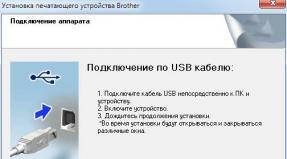
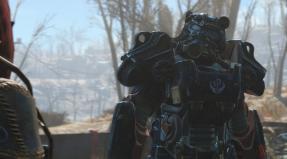
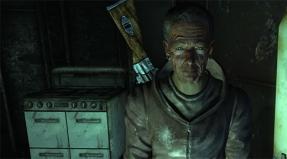



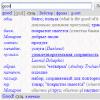


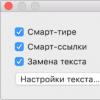
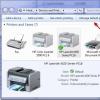
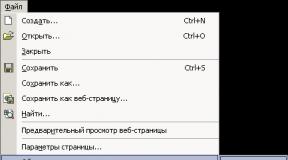


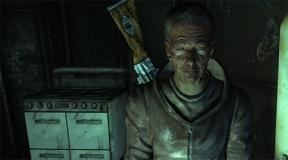



ub-288x160.jpg)